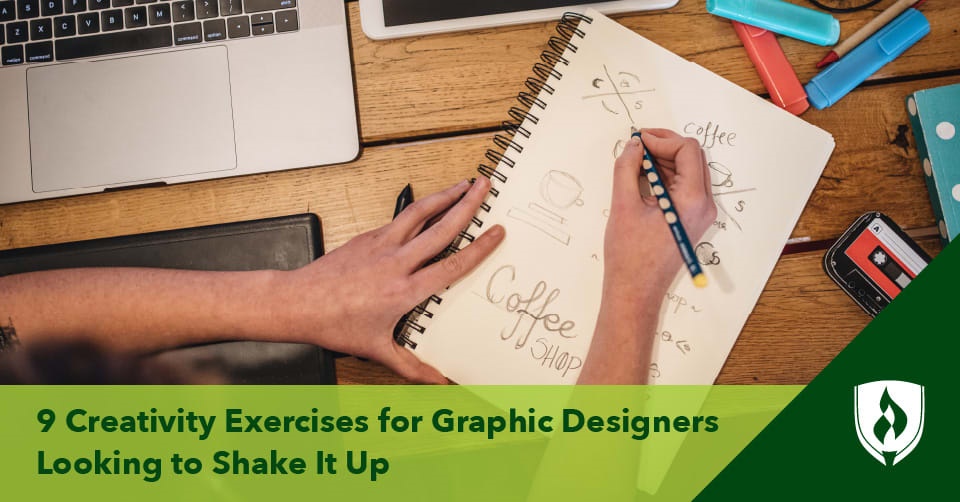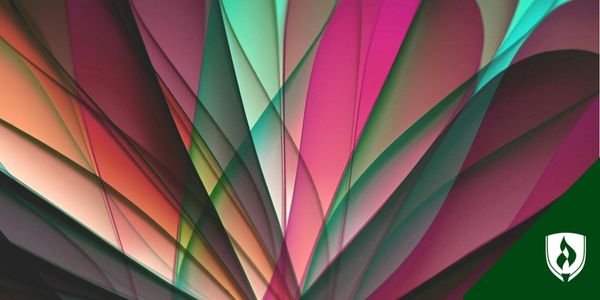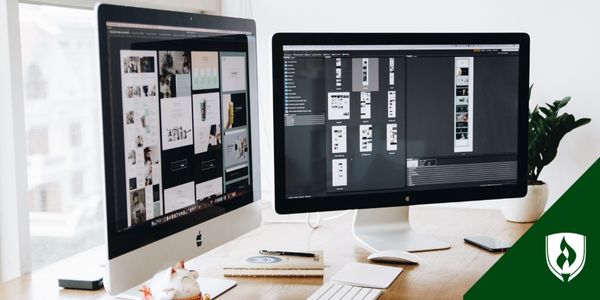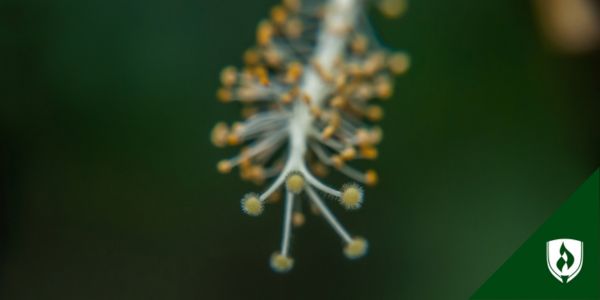
Staring anxiously at a blank screen (or paper if you’re old-fashioned) as a deadline looms over you is a near-universal experience. Whether you’ve been procrastinating or just trying to crack into a new project, that anxiety isn’t exactly the right catalyst for your best work.
In graphic design, creativity is the currency of the realm. Forming a process to let your brightest side loose is an important part of success. Beginning may very well be the hardest part—but it doesn’t have to mean figuratively banging your head against a wall until something interesting comes out, and it certainly doesn’t have to happen alone.
We interviewed various graphic designers to ask how they nurture their creativity amid the day-to-day demands of the job. These creativity exercises can help you invigorate your imagination, sharpen your artistic eye, impress clients and just generally crush it as a creative.
9 Creativity exercises for graphic designers
1. Work in threes
Sometimes, more work upfront is less work in the long run. Daina Renton, designer and project manager at INSIGHT Philanthropy & Brand Consulting, drafts three initial concepts for her clients once she understands their needs. The concepts don’t need to be fully fleshed out; even a framework will do.
Once she has three primary ideas, Renton says she picks her favorite of the three and builds out “three more ideas out of the first idea, whilst changing only one component of it.”
From there, Renton continues the process, exponentially expanding and refining ideas until something sticks.
“Eventually, one of those lines of thought or design runs out, and you’re left with an array of ideas,” she says.
This process keeps you pretty far away from a blank page. “Even if you hate an initial concept,” Renton says, “sometimes the most valuable exercise is to see it right through to the end. Some of my best work has been an accident in its inception.”
2. Create a better working environment
It’s hard to pull creativity out of the exact same setting day after day. What about finding new places to work from time to time? “For me, the environment is an essential part of the design process,” says Becca Klein, graphic designer and entrepreneur. “It’s incredible how much of a difference and impact it can have on your creative abilities and ultimately the quality of the work you produce.” When possible, changing your physical setting can do wonders for your creativity.
If you work all week in your office, controlling that environment is critical. “Having too much clutter around makes me feel stressed, and as a chronic procrastinator, I find I’ll do anything to avoid a difficult graphics task sometimes,” Renton says. “So to avoid a two-hour side quest cleaning up my desk before I get to work, I maintain the desk in the morning and evening of every work day so I am more inclined to get better work done, with a clear head.”
3. Play a game of crazy eights
Sometimes, your greatest ally in creating is just getting out of your head and using your instincts. Adam Hartley, director at ONBOX Creative Inc., suggests trying a more active exercise that he calls “crazy eights.” If you work within a team of creatives, this energizing creative exercise can involve fun prompts and lots of camaraderie.
“Here, each person is given one minute to rough sketch eight ideas,” says Hartley. “The speed required here means there is no time to think, so you see a true or most stripped-back interpretation of an idea here.”
Hartley recommends practicing this game with coworkers to eliminate screens and distractions. It can be an opportunity for a lot of creative individuals to gather together, have fun and tap into their creative potential.
4. 20-minute free draw
Many graphic designers recommend a short session of drawing freehand as a means to kickstart their creative process. If you work alone and just need something calm and creative to ground you, this is a perfect exercise to start your day, as all you’ll need is a pencil, paper and a timer.
It may interest you to work on a personal project, or maybe you’ll prefer to start from scratch each time you practice. Whichever you prefer, the idea remains the same: Let go of your schedule and expectations for twenty minutes and just allow yourself to create what you want.
The wide-open nature of this approach allows you just start making something without fixating on the project requirements or limitations that may be stifling you at first. Once you’ve built some creative momentum, it can make finding the right approach to a more focused project much easier.
5. Immerse yourself in the world of the specific project
If you are inspired by learning new things, this exercise is for you. Klein uses this activity when she gets a project from a client in a field she’s not familiar with. “I simply download a few popular podcasts from within that industry,” says Klein. “I then go on a run and listen to the podcast. Over the course of 30 minutes or so, I'll hear terms, phrases and concepts that instantly stimulate my creative flow and give me ideas that I can immediately begin to work on when I get back.”
If podcasts on your specific project are unavailable, any kind of research will do. The goal is to begin to learn about this new industry through whatever means possible. Take note of the language used and the overall feel of the subject matter, and use it as a starting point to inform your early design efforts.
6. Create an “intentional” music playlist
Music can be great for creativity, but the benefits you get from music may depend on what you listen to. You probably already utilize music in your work, but putting some intentional thought into the types of music that will benefit a particular project or the types you need most in a given mood can be a huge assist for your creativity.
If you normally listen to music during your creative time, a good exercise would be to examine the playlists, podcasts or stations that you listen to so that you can ensure what you are hearing is helping, not hindering, the creative process.
7. Reinvent the wheel
Maybe there is sometimes a need to reinvent the wheel. Renton suggests reworking classic pieces of art or logos to refresh your perspective. Start by looking at an iconic logo, then try to redesign elements of it to see what you can change in an interesting way. “More often than not, I can create something applicable to my current project,” says Renton.
This different way of using your brain to look at classic designs may just be the different perspective needed to get you going on your own project.
8. Create a mission statement
One of the pitfalls any artist can fall into is forgetting why they are creating in the first place. One of Hartley’s biggest pieces of advice is to remember the bigger reason for why you do what you do. “Connect every project to something bigger—a larger goal or purpose,” says Hartley. “Finding what inspired you in the first place is the best way to move forward again.”
At the onset of each project, create a mission statement about why this specific work matters, or even why working in this field matters to you. Whenever you feel stuck, zoom out and reread your mission statement. This perspective can help you get back to the root of your design.
9. Give yourself a break
Last and certainly not least is one of the most important creative exercises your brain needs: Resting. It is possible you’ve gone through a list like this one already and just can’t seem to get that inspirational energy. The reality may be as simple as, hey, you need a break.
“When I'm feeling stuck in the middle of a project, I just put everything down and come back to it an hour or two later if I can,” Renton says. “Feeling 'stuck' to me isn't something you can necessarily train yourself out of. You are always going to feel stuck at some point. It won't happen just once, and is likely to happen a lot, especially with more challenging briefs. So all I do to solve that is give my brain a rest.”
Creativity needs stimulation
If you are feeling stuck in your creative process, don’t hesitate to give these different creative exercises for graphic designers a try. While they all may not work, the one or two that do can be an incredibly helpful addition to your career. If you have yet to turn your creative spark into a professional endeavor, perhaps it’s time to explore your options. Check out “10 Types of Design Jobs for Creative People” to learn more about what could be available to you.




